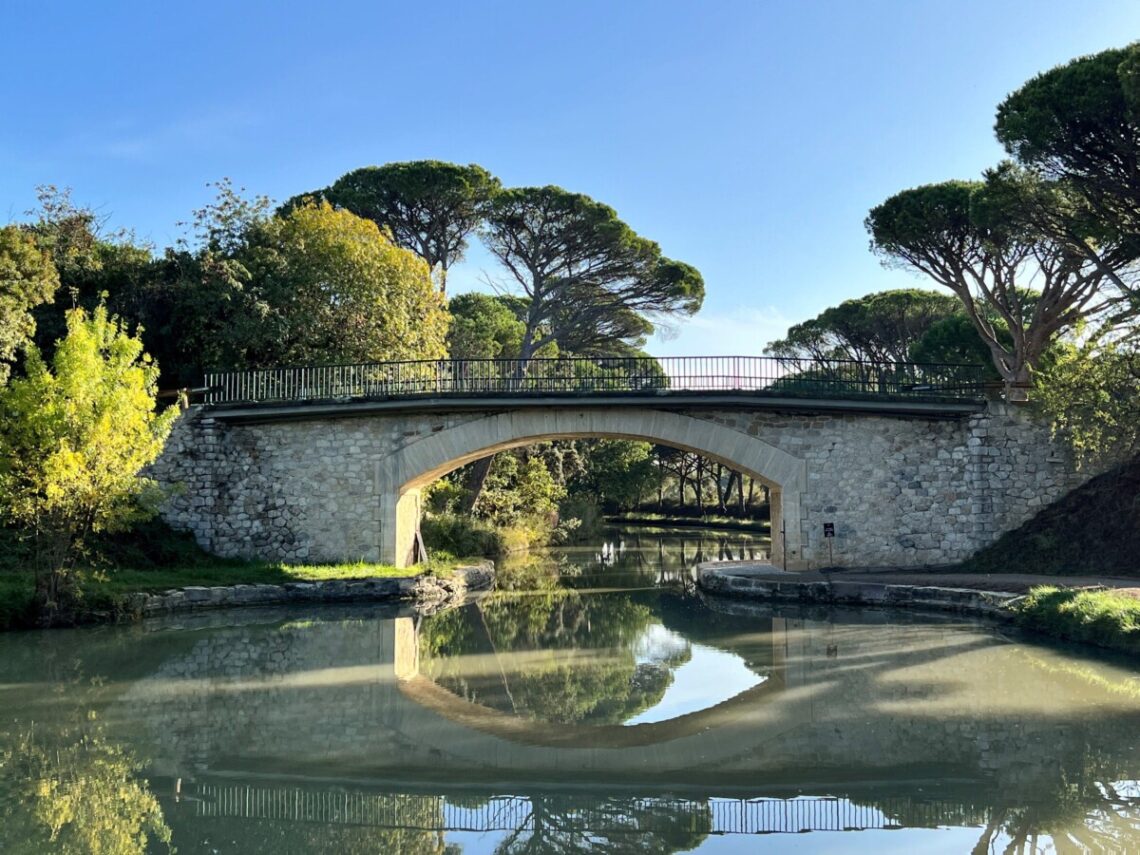
Canal du Midi – an engineering masterpiece
There are probably many people who think that medieval cathedrals, the Colosseum or Versailles are more impressive, but a canal stretching from the Atlantic to the Mediterranean is right up there with the most impressive things that were done in the 19th century in my book.
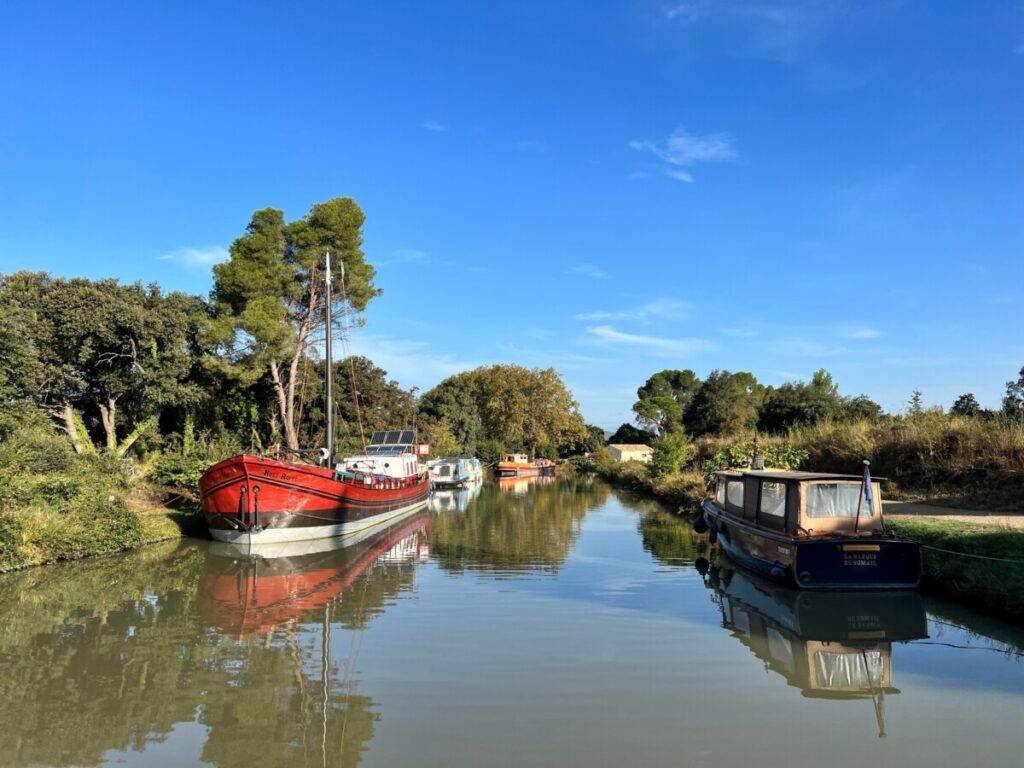
Canal des Deux Mers
The Canal du Midi provides a waterway that stretches from the Atlantic to the Mediterranean. Strictly speaking, the Canal du Midi only runs from Toulouse to the Mediterranean, but there is a canal between Bordeaux and Toulouse as well. It is probably just as impressive. The two canals connect the two seas, hence the name Canal des Deux Mers.

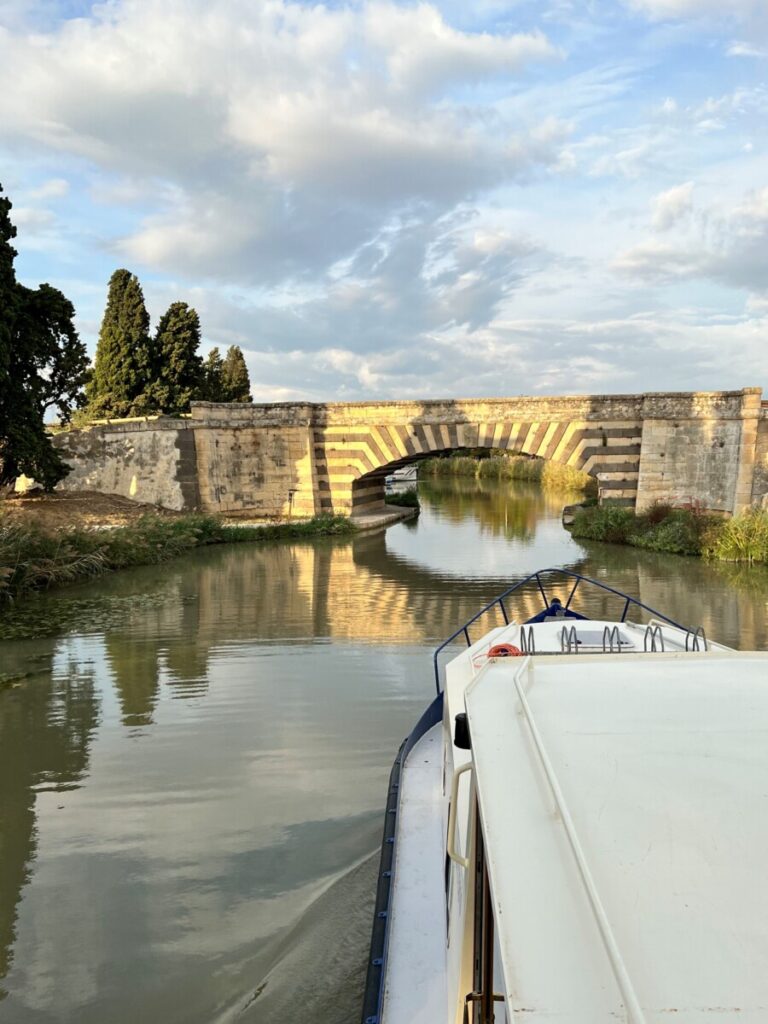
The Canal du Midi was placed on UNESCO’s World Heritage List in 1996. It is described by UNESCO as one of the most significant civil engineering achievements of modern times, and an important prerequisite for the industrial revolution. So I’m not completely off when I think this is a construction that more people should be aware of.
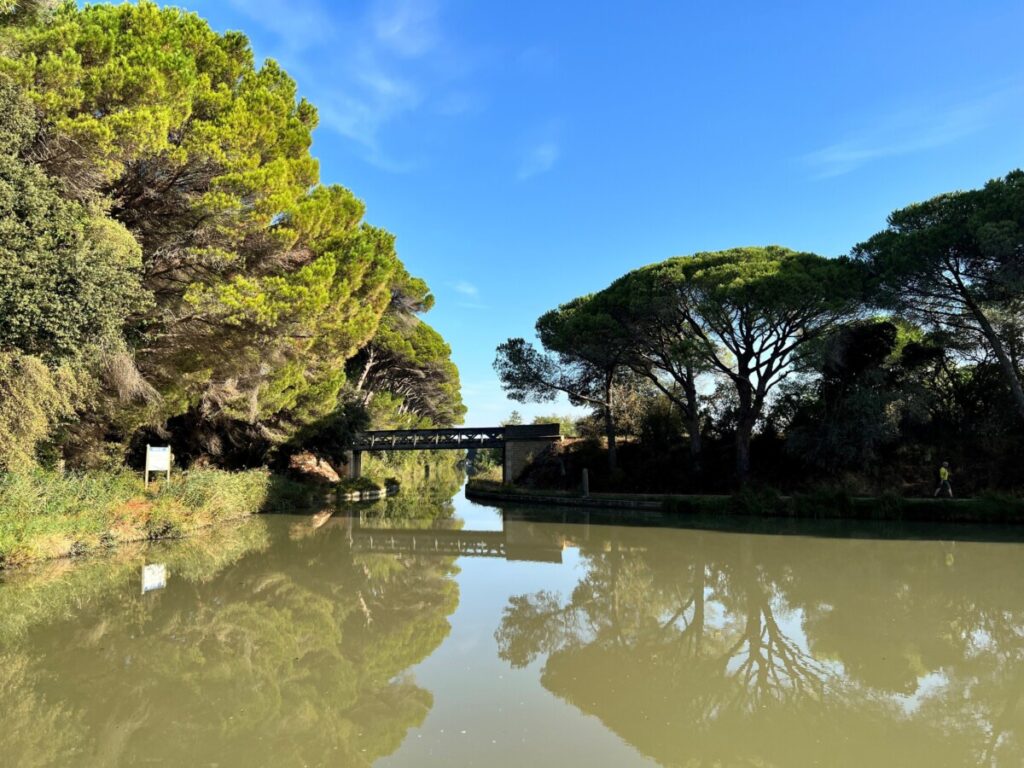
I have long wanted a trip on the Canal du Midi, although I am certainly not a boat person. Fortunately, I have Lars who is used to boats and didn’t mind being captain on board. The boat we rented is self driven but I’m sure you can find cruises with captains as well.
Before we set off, we had a short introduction from a Dutchman who luckily spoke good English.
A bit of history
In the 17th century, the sea route around Spain took a whole month. France was not the best of friends with Spain, so that was another reason to try to shorten the long journey.
The canal system was constructed by the engineer Pierre Paul Riquet. King Louis XIV gave Riquet permission to build the canal in 1662. Permission to start the actual work was given to Riquet on 5 October 1666 by finance minister Colbert.
King Louis XIV supported the construction, and the costs were divided in three. 40% paid by the king, 40% by the province through which the canal passed and 20% by Riquet himself. But Riquet remained sole owner of the canal.
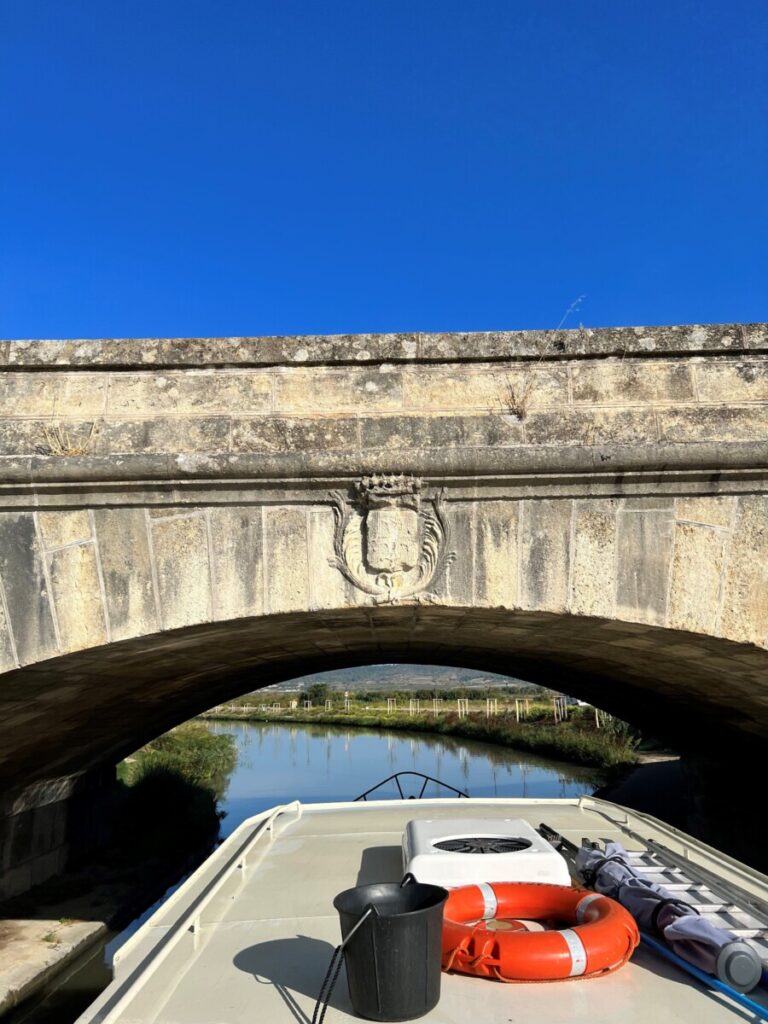
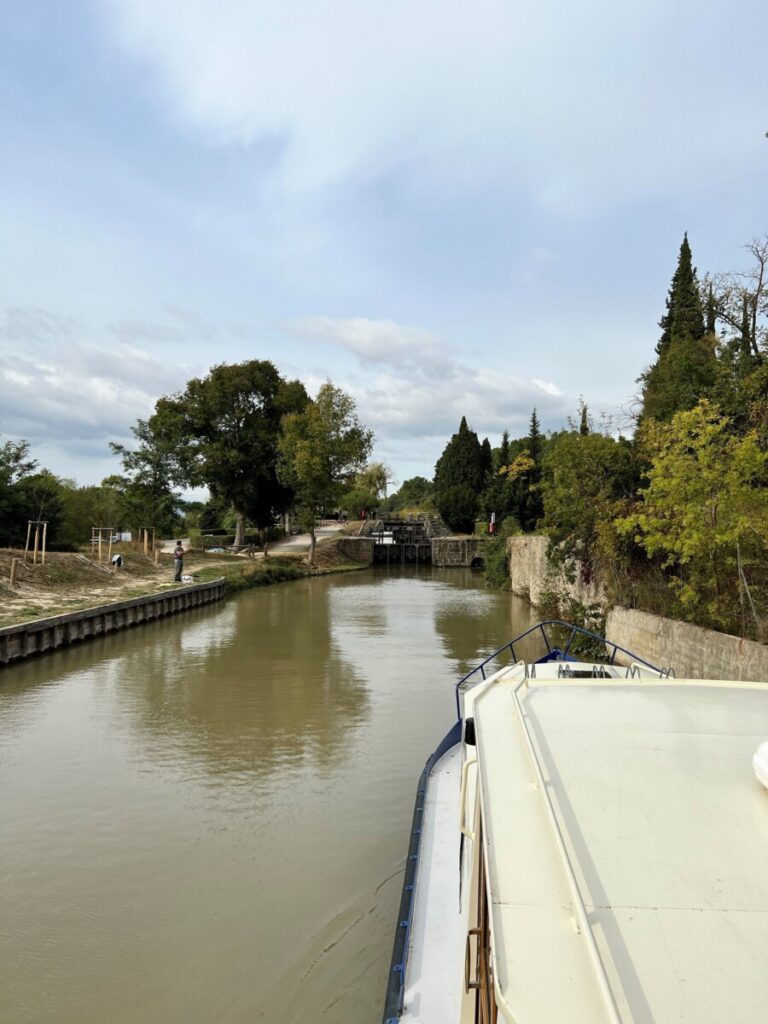
Riquet developed a system of dams to collect water from the mountains to fill the canal. He built both tunnels and canal bridges. Riquet himself died only six months before the canal was opened for traffic, but still saw that his life’s work was largely completed. The canal was officially opened as the Canal Royal de Languedoc on 24 May 1681.
During the 14-year construction period, 12,000 workers worked on the canal, and 7,000,000m³ of soil was excavated. After the revolution in 1789, the name Canal Royal de Languedoc was changed to the slightly less royal Canal du Midi.
The French Republic bought the canal from Riquet’s heirs in 1897. Freight traffic ceased in the 1970s, and today it is mostly used for tourism. Canal du Midi the oldest canal in Europe still in operation.
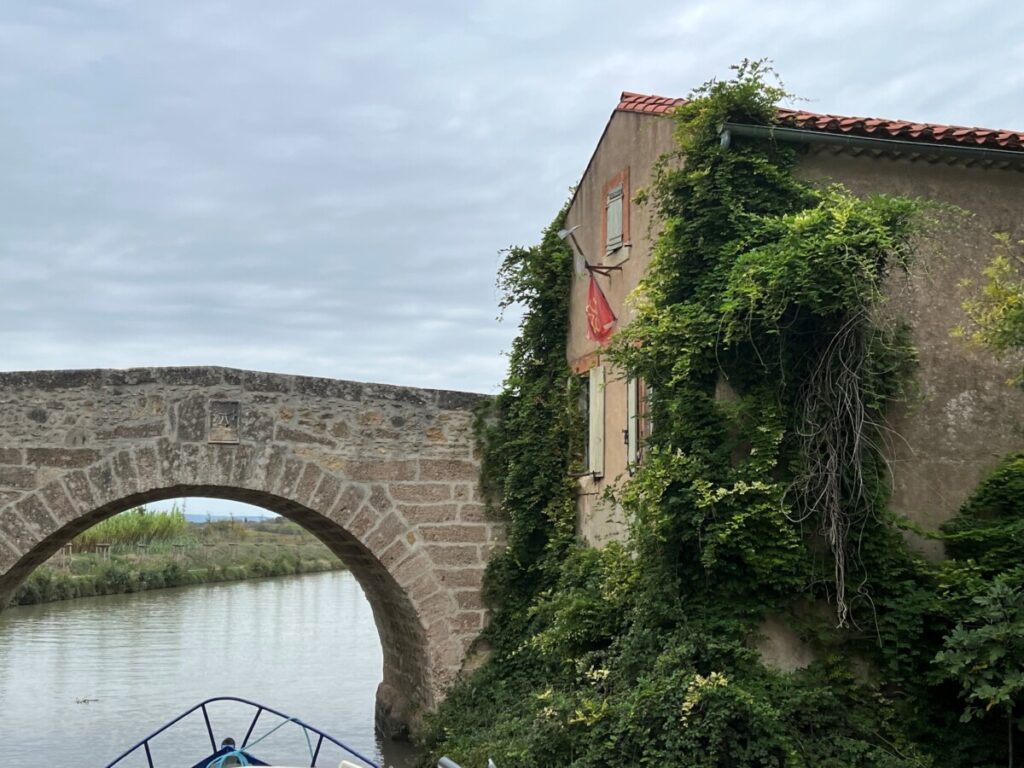
Tree disease
Unfortunately, the double rows of trees that lined the banks for almost the entire length of the canal have been cut down because of a disease. That means that the Canal du Midi has lost some of its special character. They are planting new trees, but the new plantings have also been affected by the tree disease.
The towpaths who were used by horses to drag the barges are now an excellent walking and cycling route.
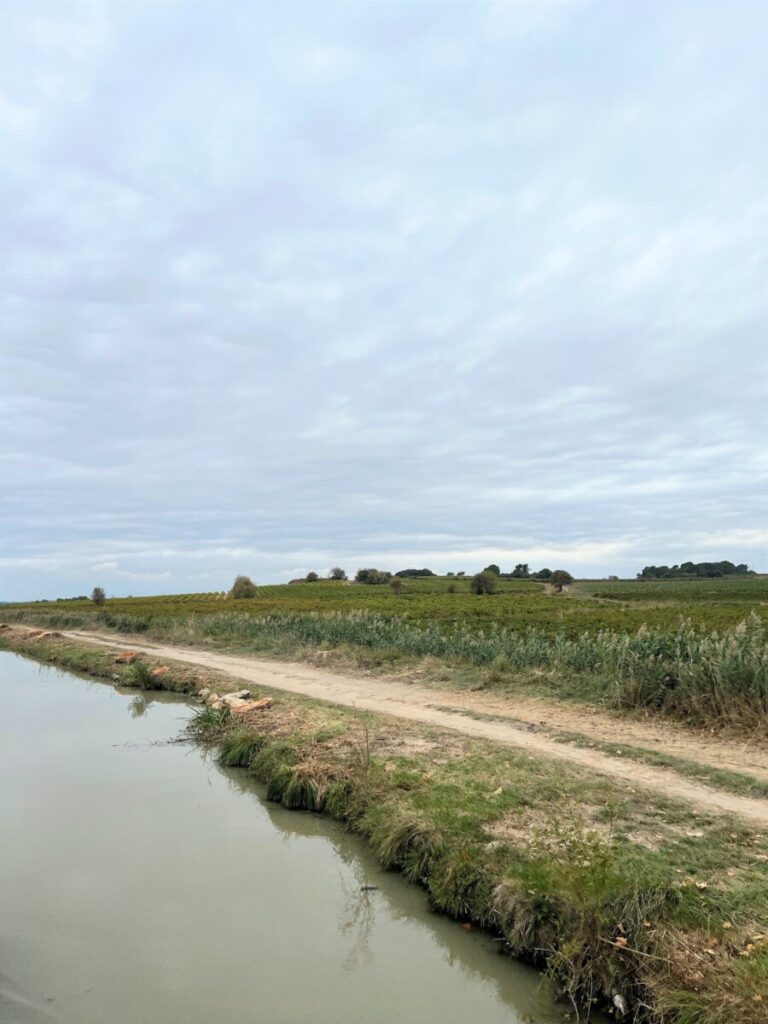

We “met” many cyclists and walkers who willingly waved while enjoying the lovely October weather. The fact that the canal is quieter compared to the middle of summer made it a little easier to be on your first trip.
Capestang
We started in Capestang, which is between Narbonne and Béziers. An hour’s drive from our house in Fitou. We stayed on the boat for two nights and drove it back and forth. It is possible to drive only one way and have the boat company drive your car to the arrival point.
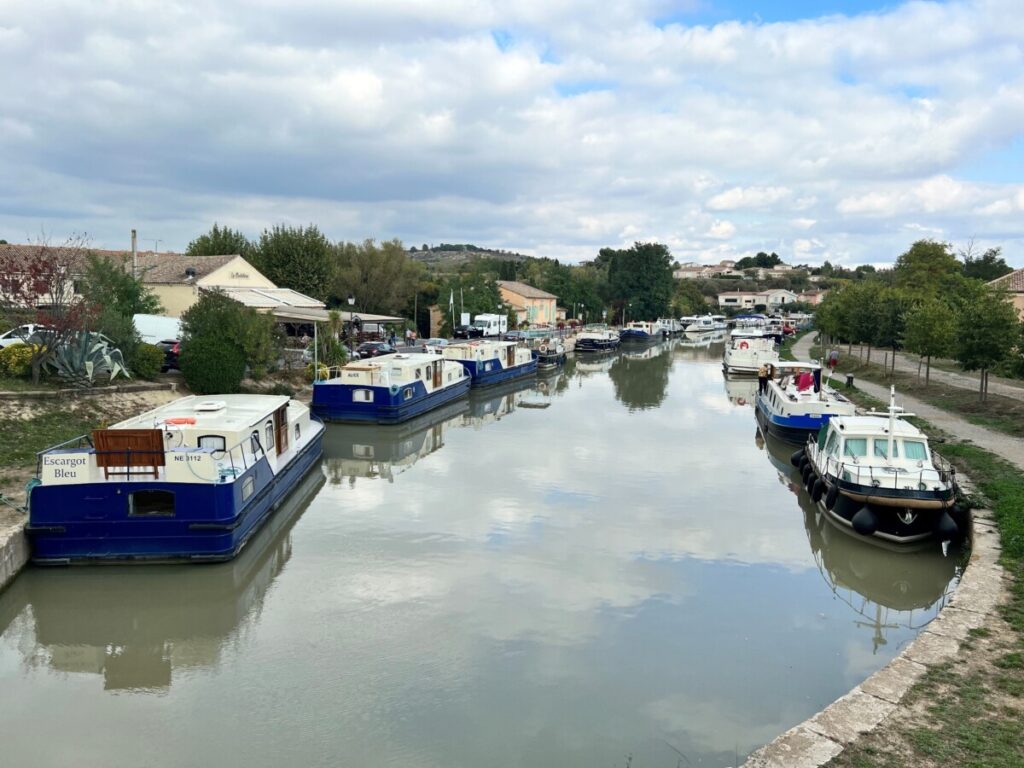
We could pick up the boat from France Afloat at 3pm and spent about an hour on registration, payment, and instructions. The boat has two double cabins, one at the front and one at the back. Each cabin has its own bathroom with toilet, sink and shower. There is enough electricity and fresh water to last 3-4 days without filling or charging. At least we didn’t have to worry about that for the 48 hours we were on the boat.
We had a nice lunch at the Auberge de la Croisade before going to pick up the boat. It was fun sailing past the restaurant on the canal a little while later.
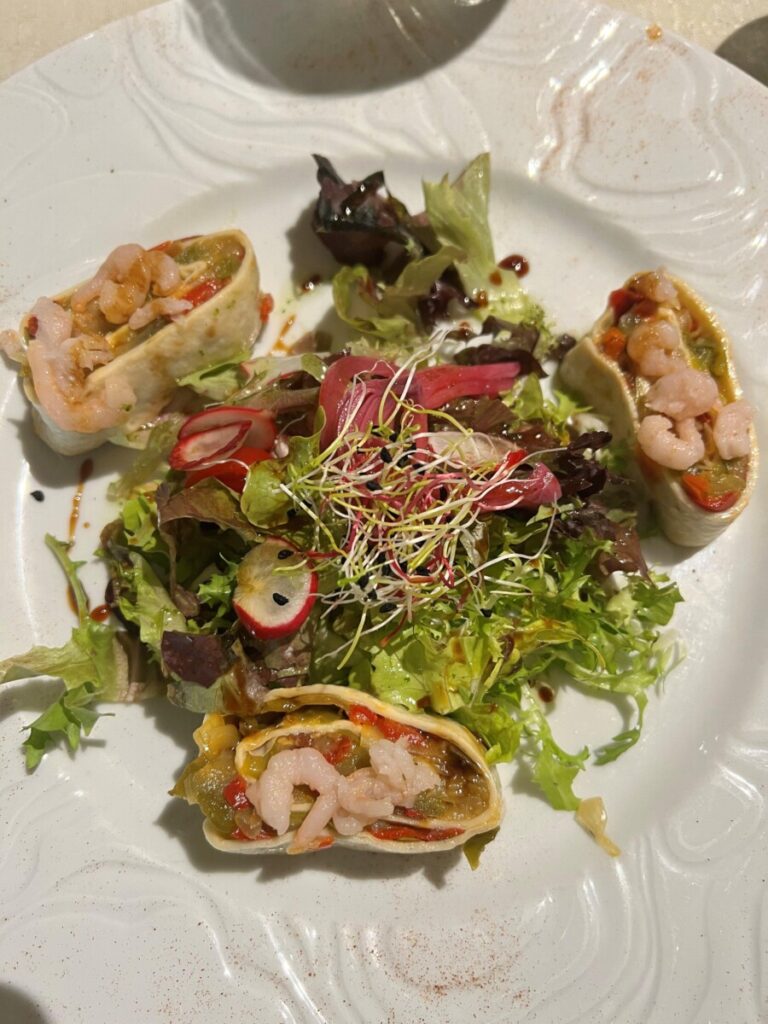
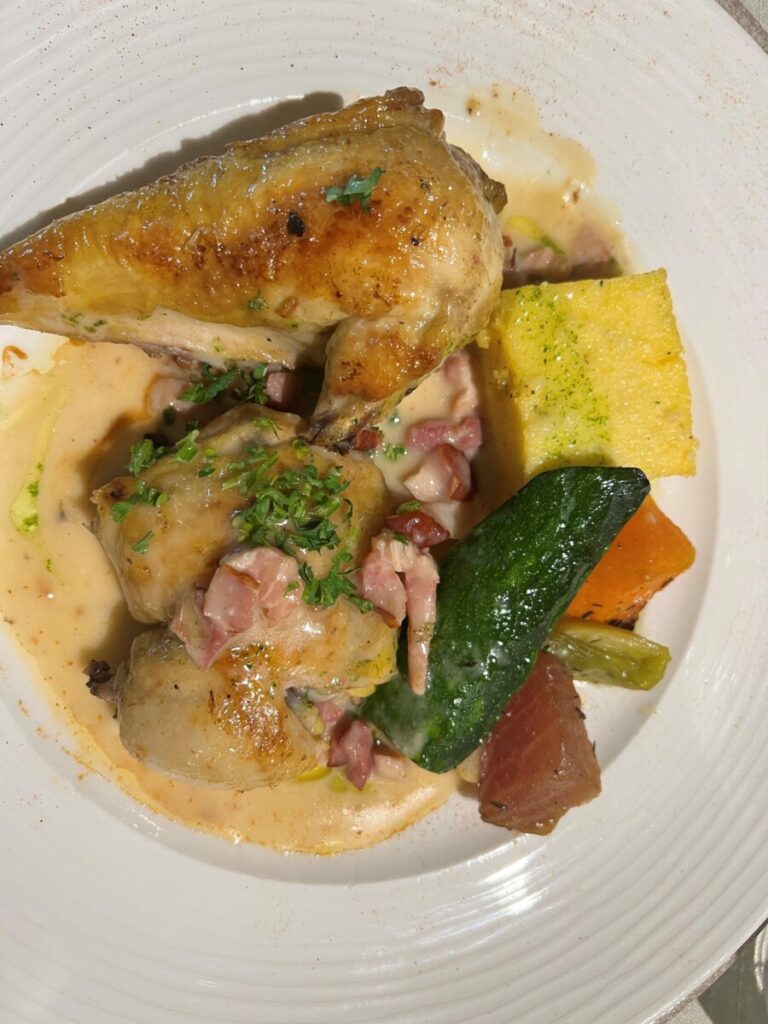
Living on the boat
We had filled up the boat with a good amount of food and drink. Specially drinks! But some crackers, bread, cheese, ham and patés just in case. We had not planned our itinerary. It was a bit difficult to know how far we would get and how long it would tak. Google maps does not work well with canals. It was also difficult to figure out where it was best to spend the night in terms of meals etc. Before we set out I had only one wish, and that was to stop in Le Somail. It’s the quintessential “Canal du Midi”-place.
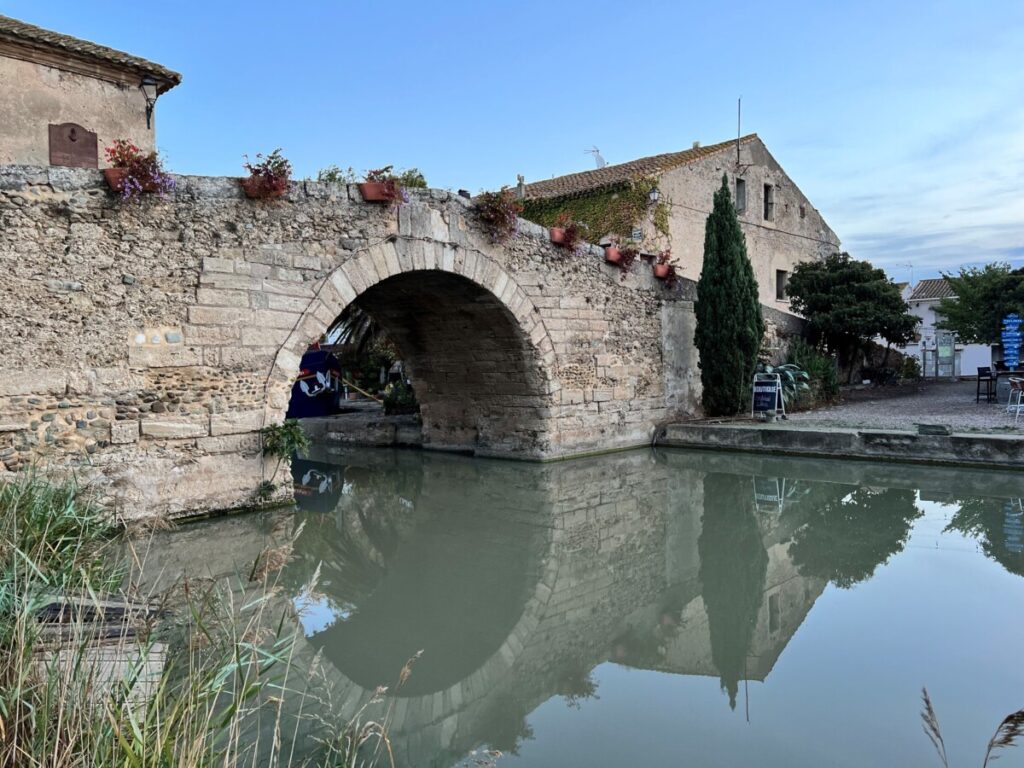
Since we had eaten a full 3-course lunch before picking up the boat, we didn’t need dinner at a restaurant that evening. So when we found a beautiful spot in a bend in the canal, with a few other boats, we decided to stop for the night. This was also within walking distance to the small town of Argeliers.
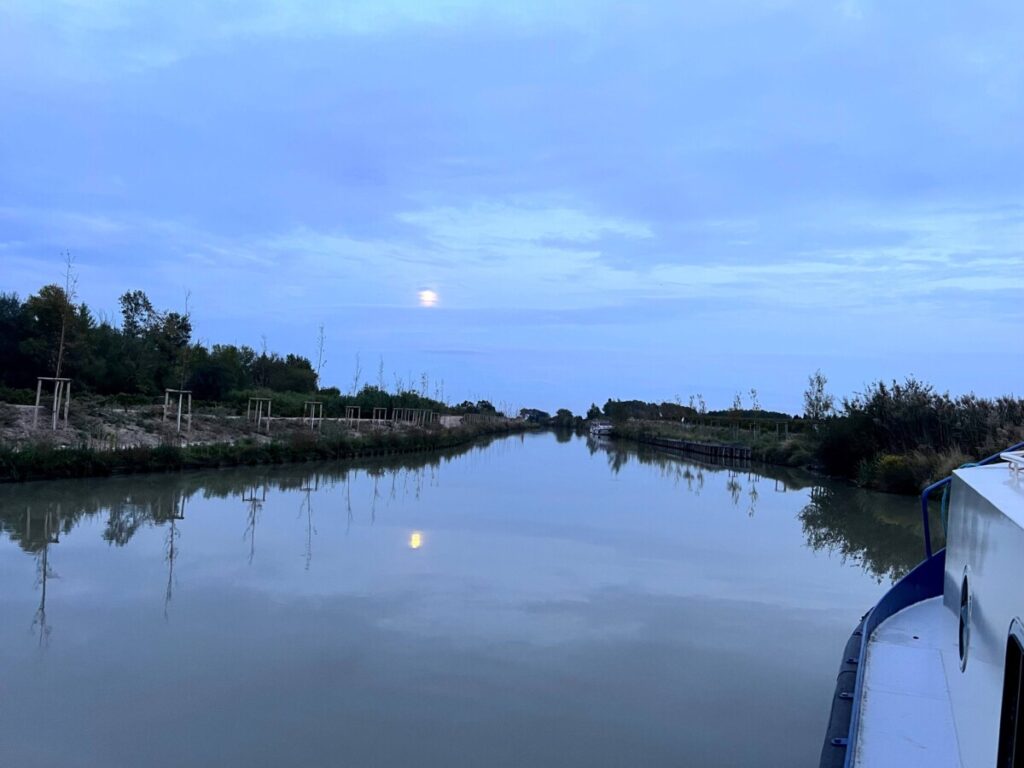
We visited the town before we strolled back to the boat through the vines. We had some light snacks with various French delicacies and some good wine before going to bed for the first night on the boat.
Smooth sailing
The following morning there was coffee and breakfast by a quiet canal before we set off. A slightly grayer day and we had a couple of showers, but luckily the boat is spacious enough that it’s perfectly fine to sit inside for a little while. But we prefer to sit outside on the deck.
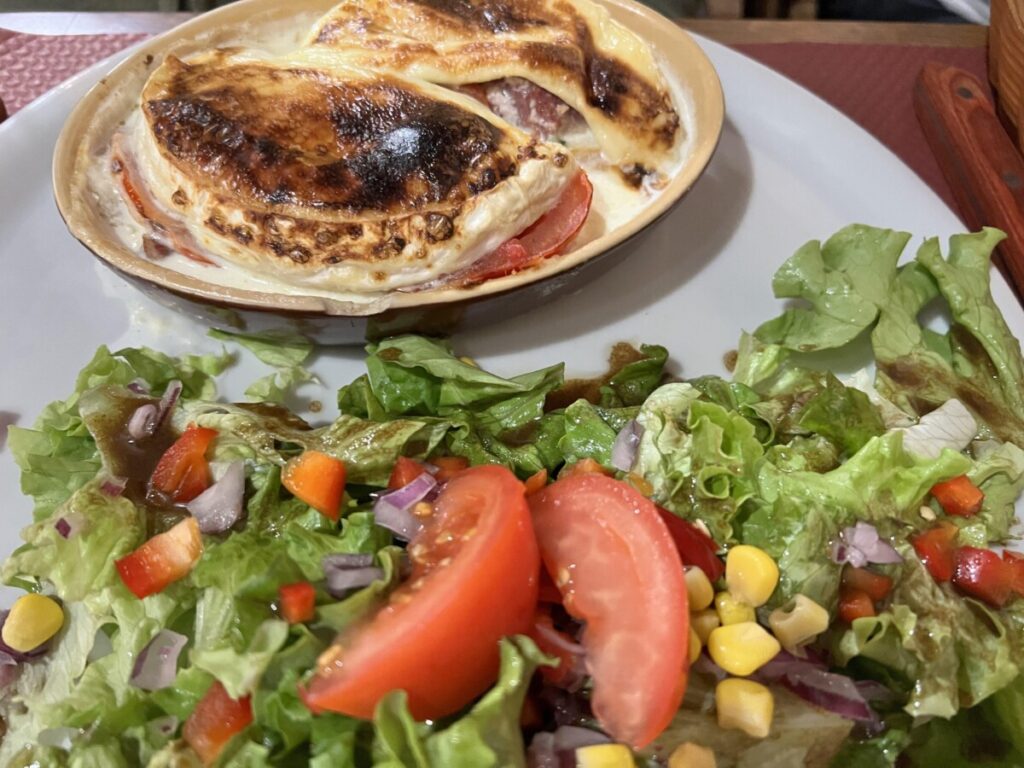
We passed through Le Somail but it was too early to stop for lunch. The small town of Ventenac-en-Minervois was our destination for lunch. We had found that there were several restaurants there. Only La Grillade du Château was open on this autumnal Saturday but one is enough. We were served copious amounts of food both as starters and mains. Huge! Another tip is to visit the Chateau de Ventenac and stock up on some bubbly. They also have wine on tap, which is quite intriguing for Scandinavians!
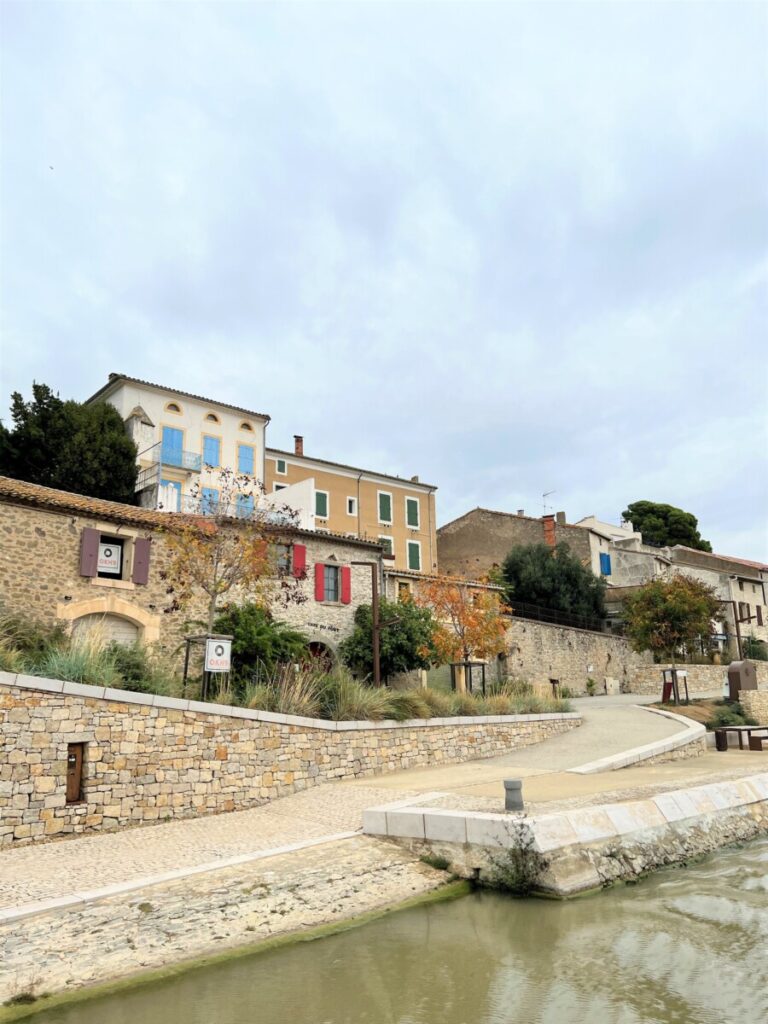
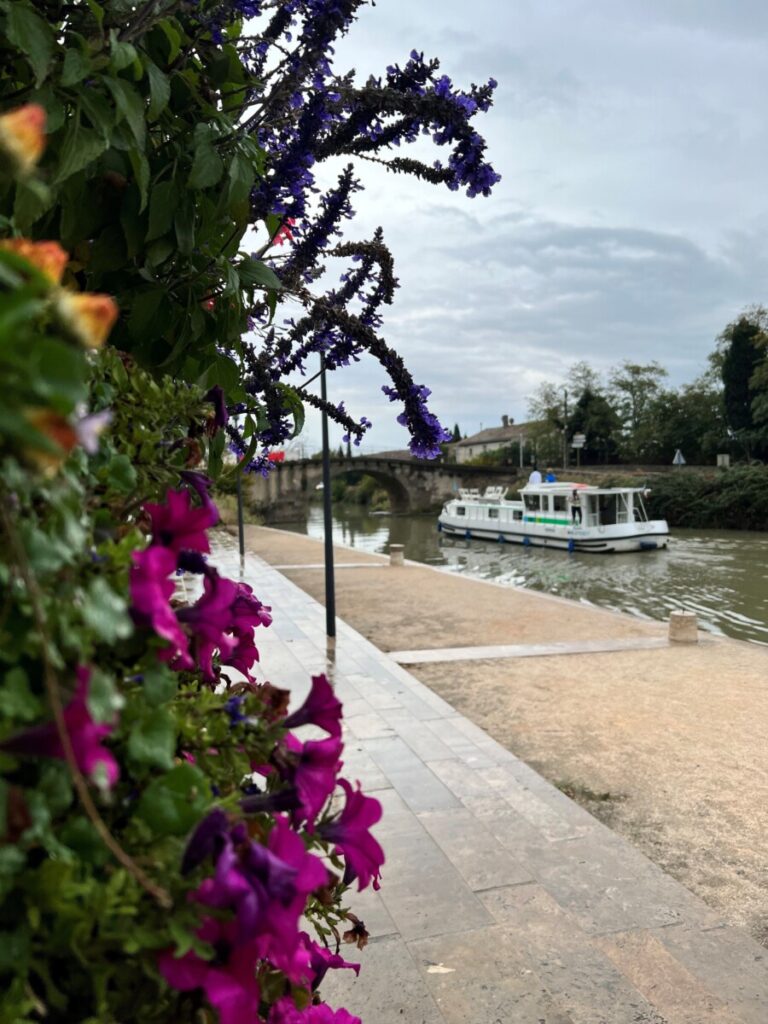
The weather improved after lunch and we enjoyed the sun and a glass of wine on deck while still enjoying the changing scenery. We arrived at our first lock and were excited and a bit intimidated by it. But you can’t be on a canal boat holiday without testing locks! But it was no big deal. It was just a matter of sailing in and tying up the boat (the right way!). The lock master was there to help and answer questions too, so we felt safe enough.
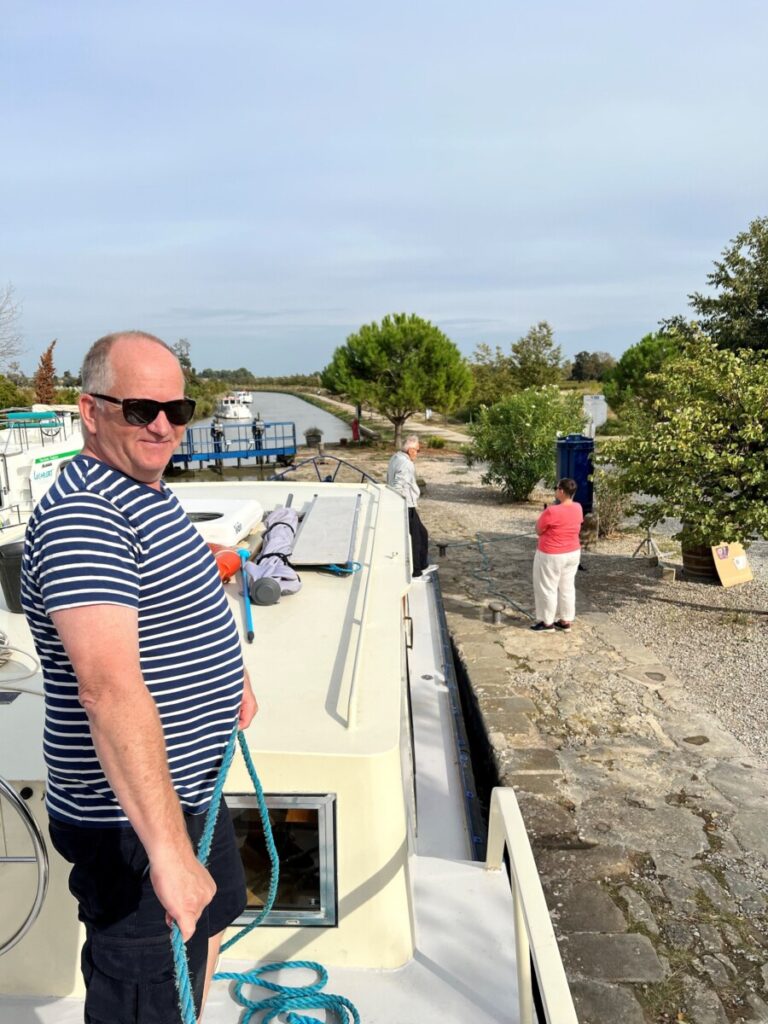
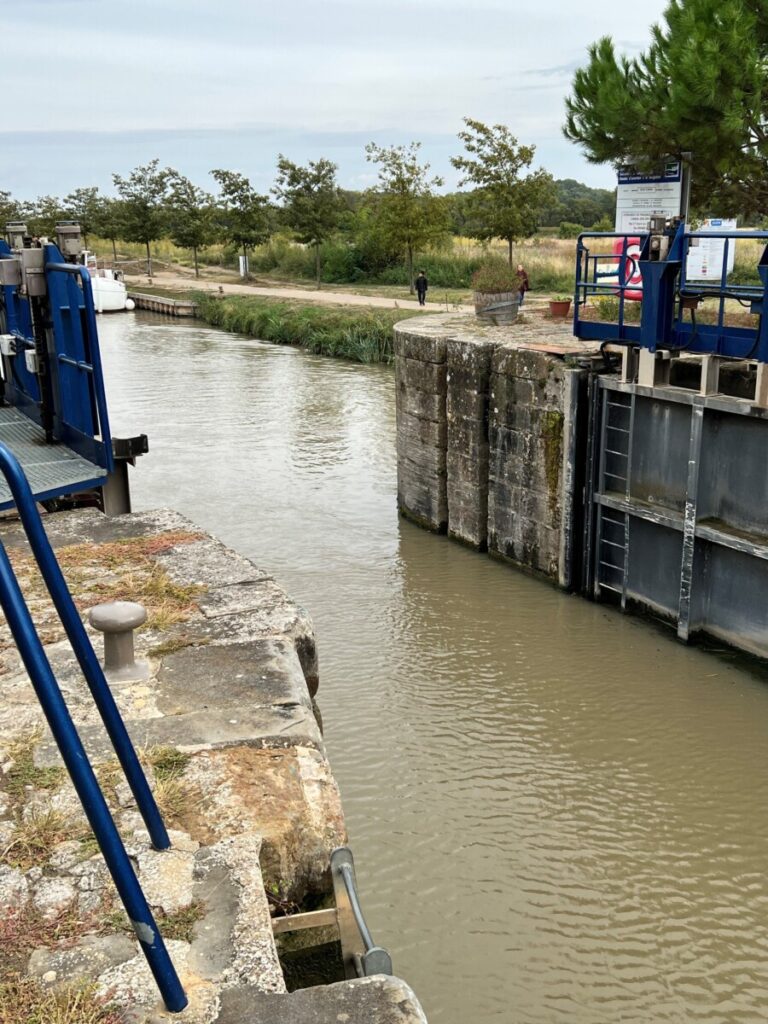
We sailed on a bit further and just before reaching the next lock, we had to turn around. We wanted to get back to Le Somail for the evening.
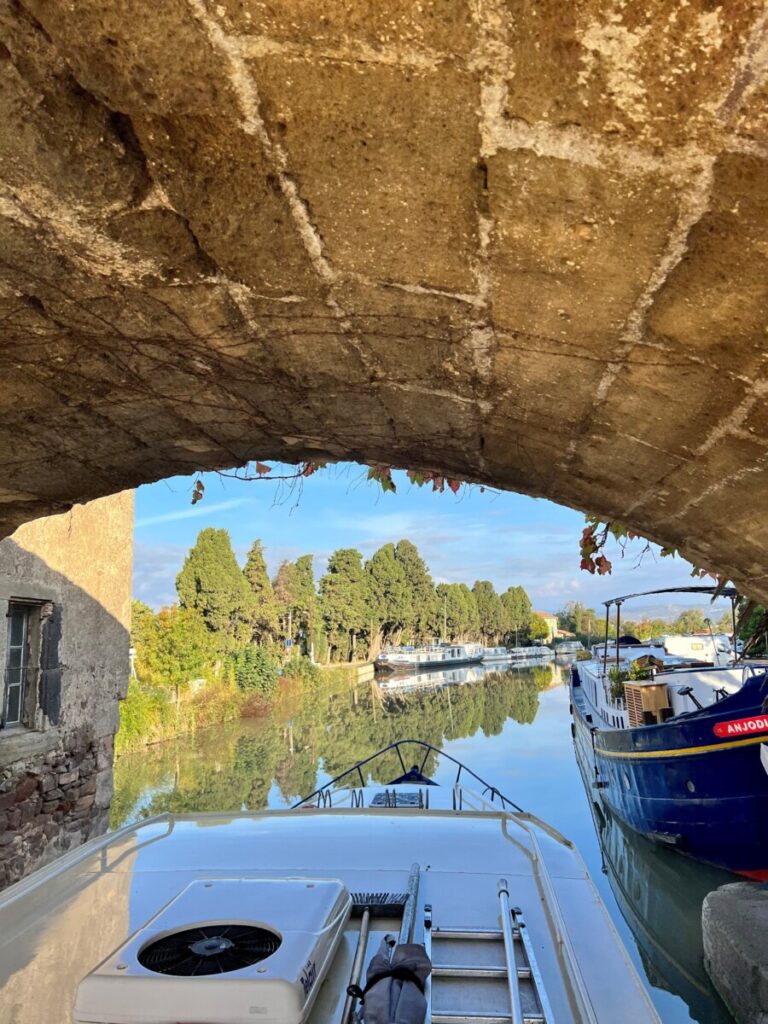
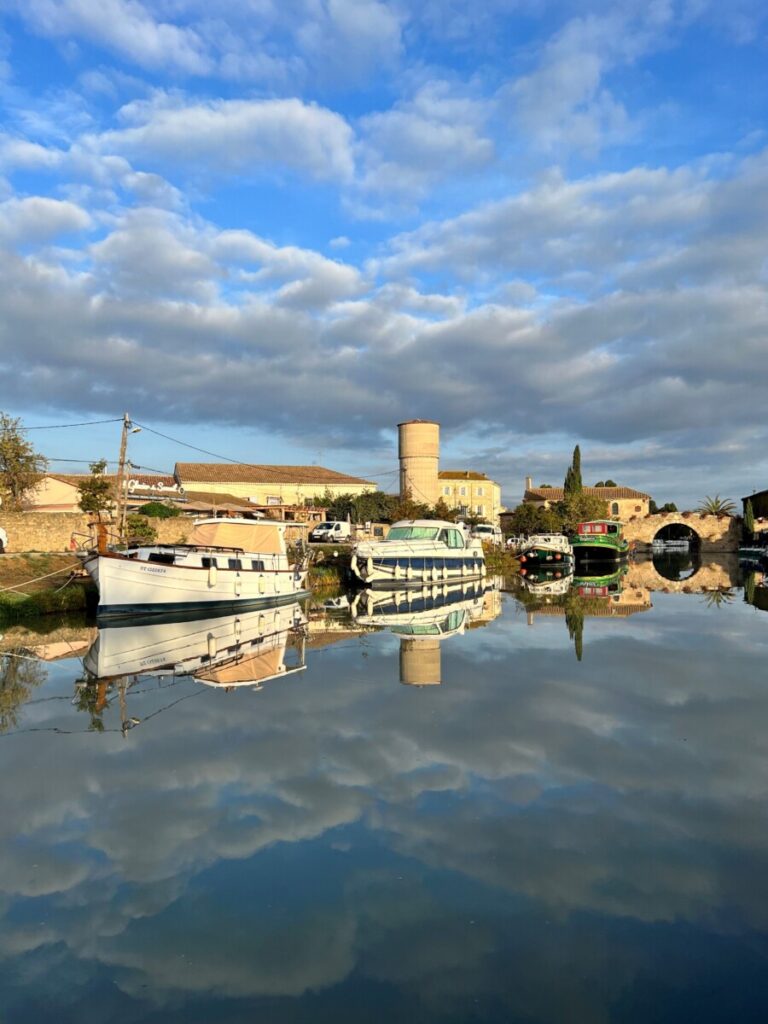
Pretty as a picture
Le Someil is an incredibly picturesque place. A lovely arched bridge crosses the canal, with a few stone buildings clustering together. We moored with a view of the bridge and strolled around the small hamlet.
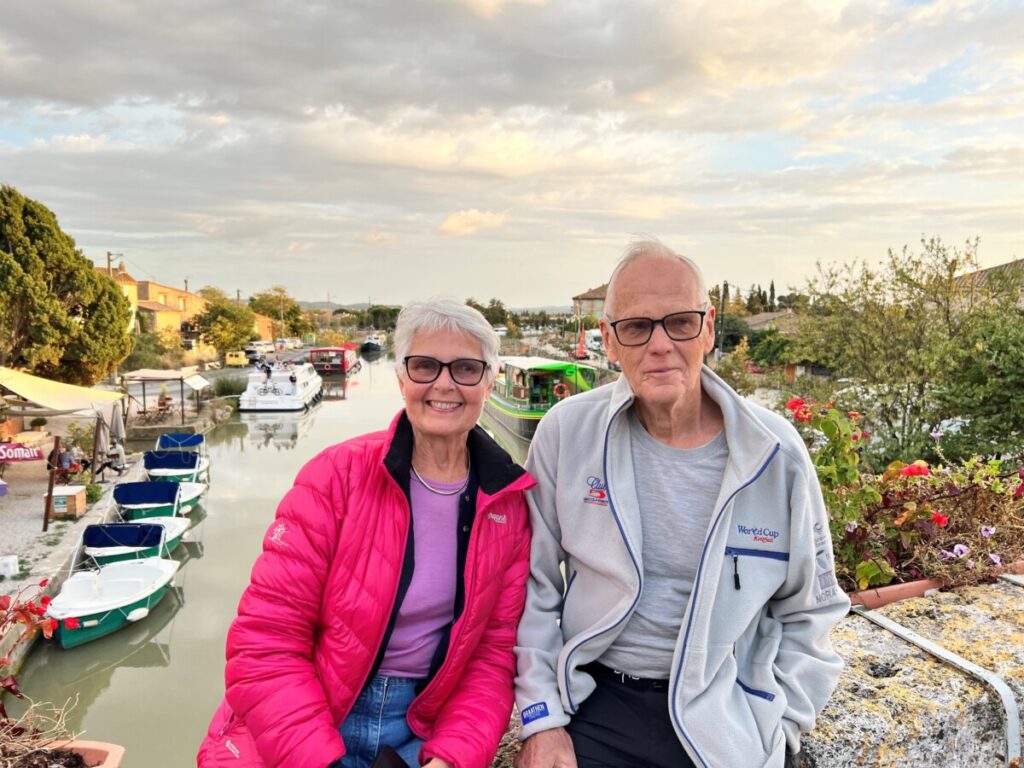
The huge lunch once again meant that we didn’t need to eat out. The weather was nice again, so after a drink at a restaurant, we decided to eat outside on the deck.

The next day the weather was perfect. We enjoyed a morning coffee and some croissants ordered the previous day from the floating shop.
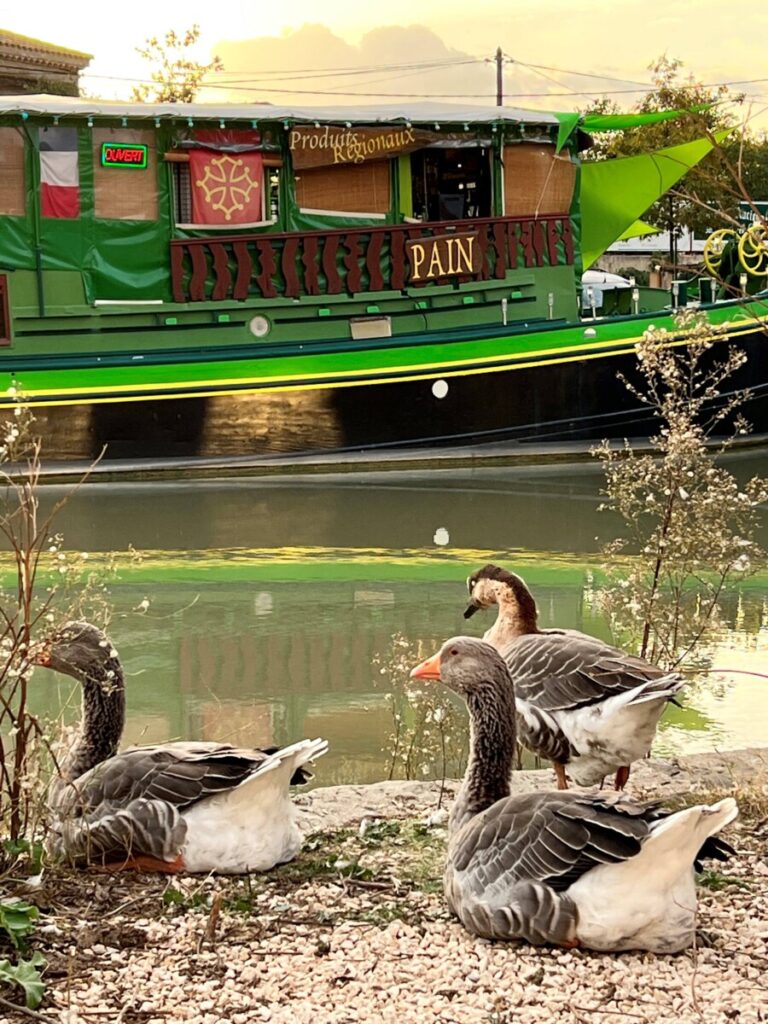
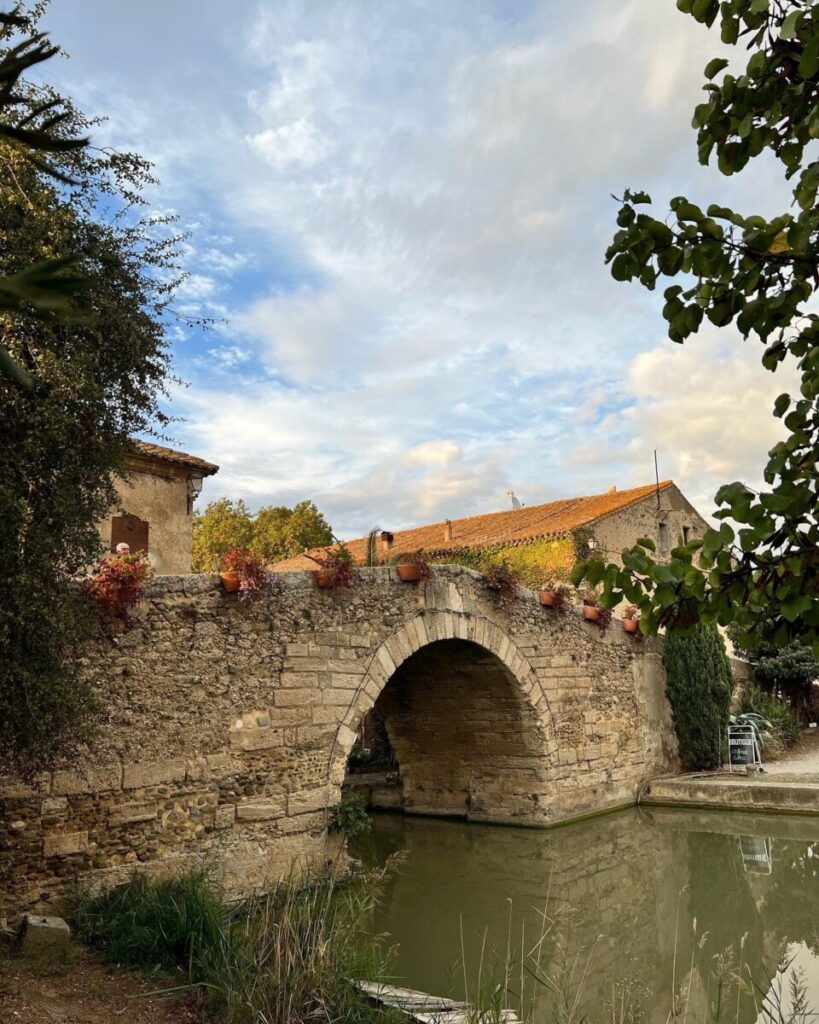
This was the best day weather-wise with a clear blue sky and nice temperatures. We just enjoyed the last few hours on deck with some local sparkling wine picked up in the cellar in Ventenac-en-Minervois.

The canal looks completely different when you come the other way. It does not feel like we were driving the same “road” twice.
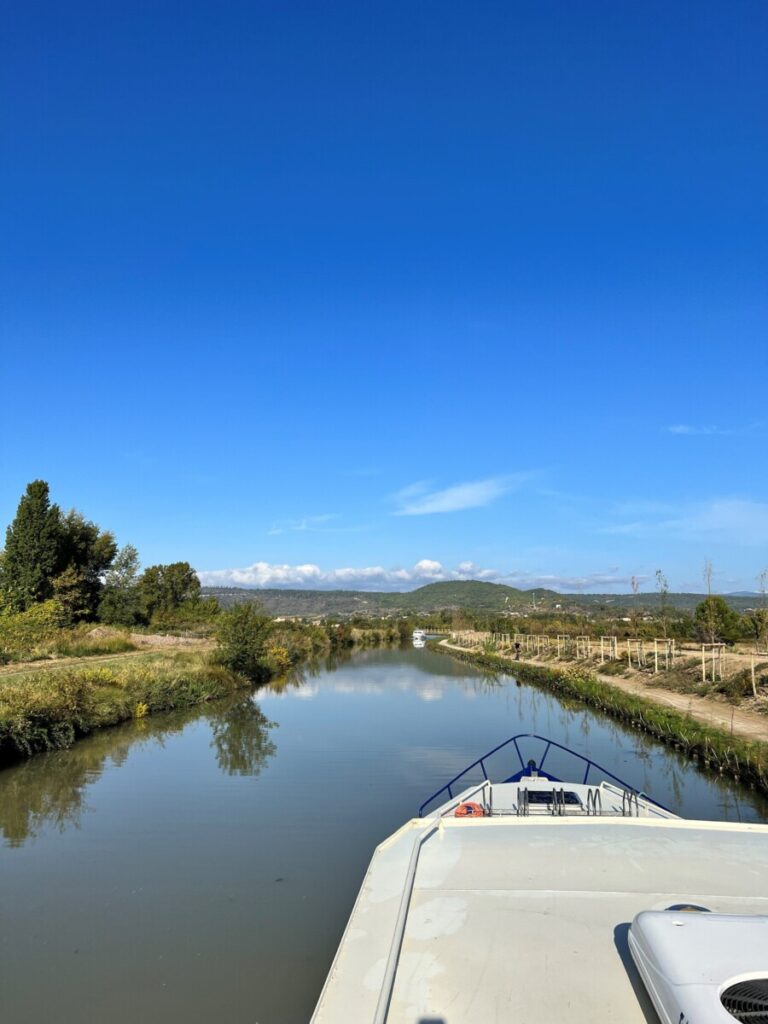
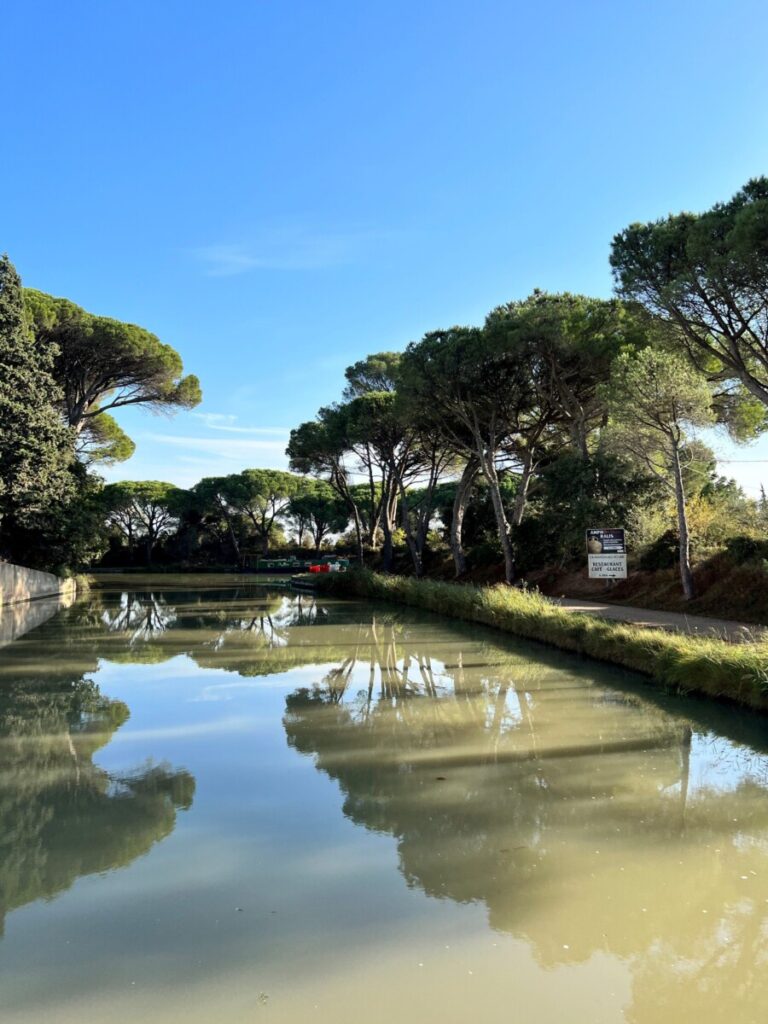
Next time with bike
This is definitely something we want to do again. I love the smooth sailing, the lack of speed and rush. We are considering the possibility of driving a boat one way and cycling back. With electric bikes, cycling is almost as fast as or even faster than driving a boat. The speed on the canal is limited to 5 knots, which is about 10 km per hour. With an electric bike, it often goes much faster than that.
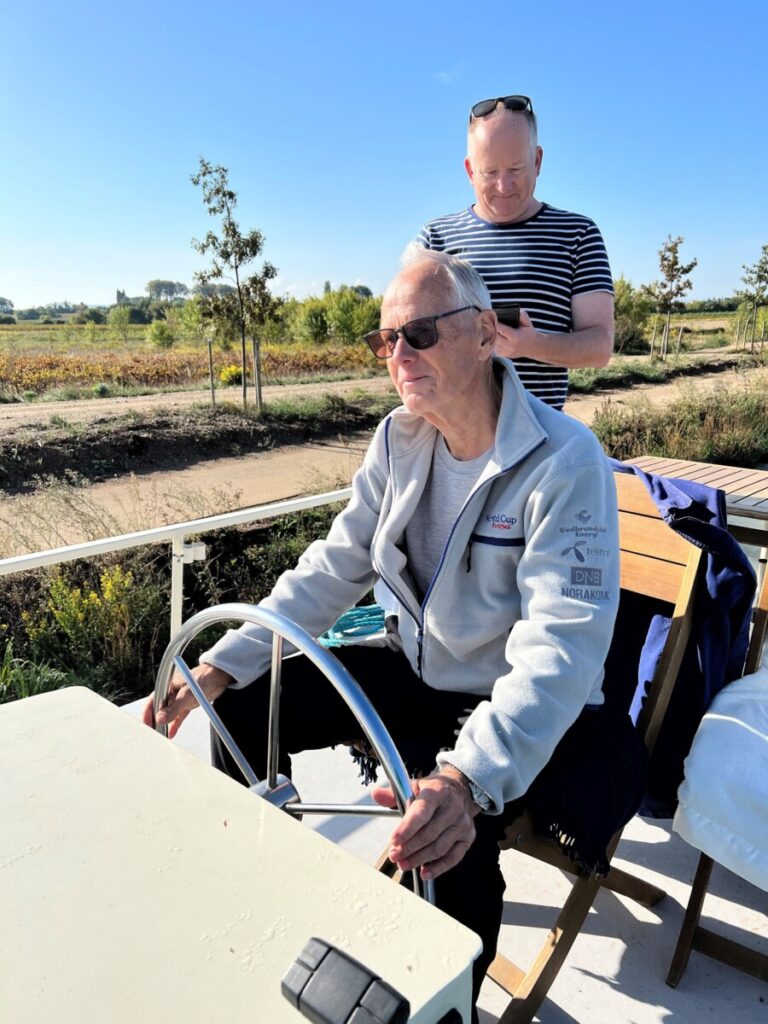
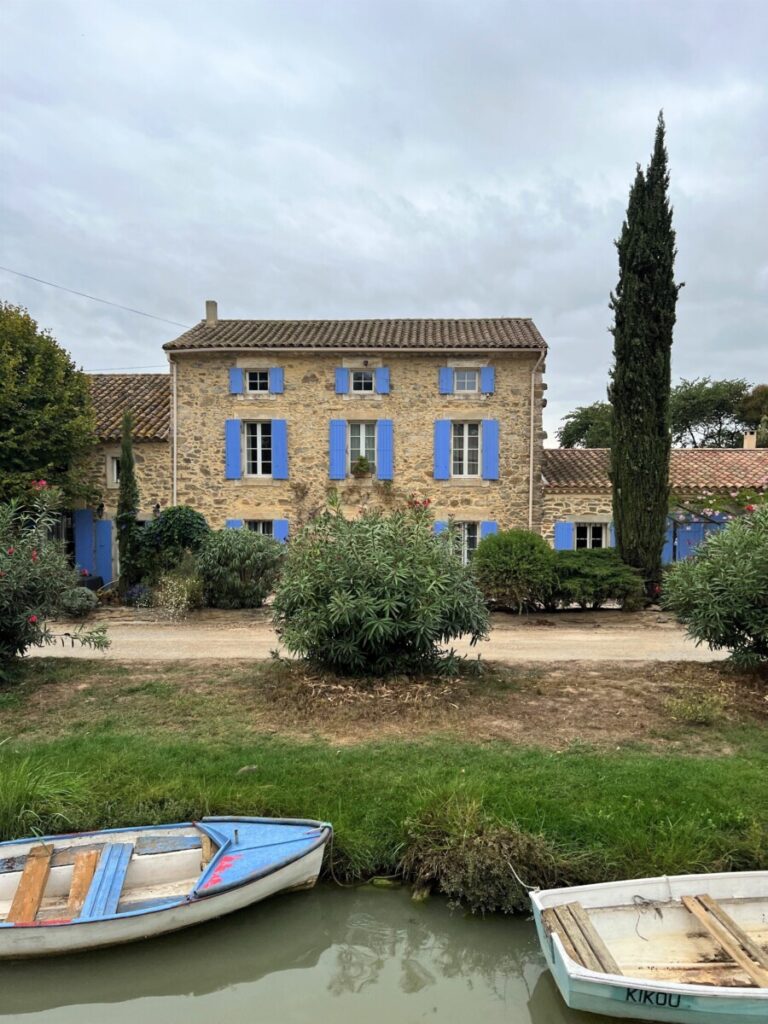
Then you can experience the canal both from the water and from the land side. There are many hundreds of kilometers left of the approx. 240 km from Sète to Toulouse. And then you can always continue all the way to Bordeaux and the outlet of La Garonne as well.
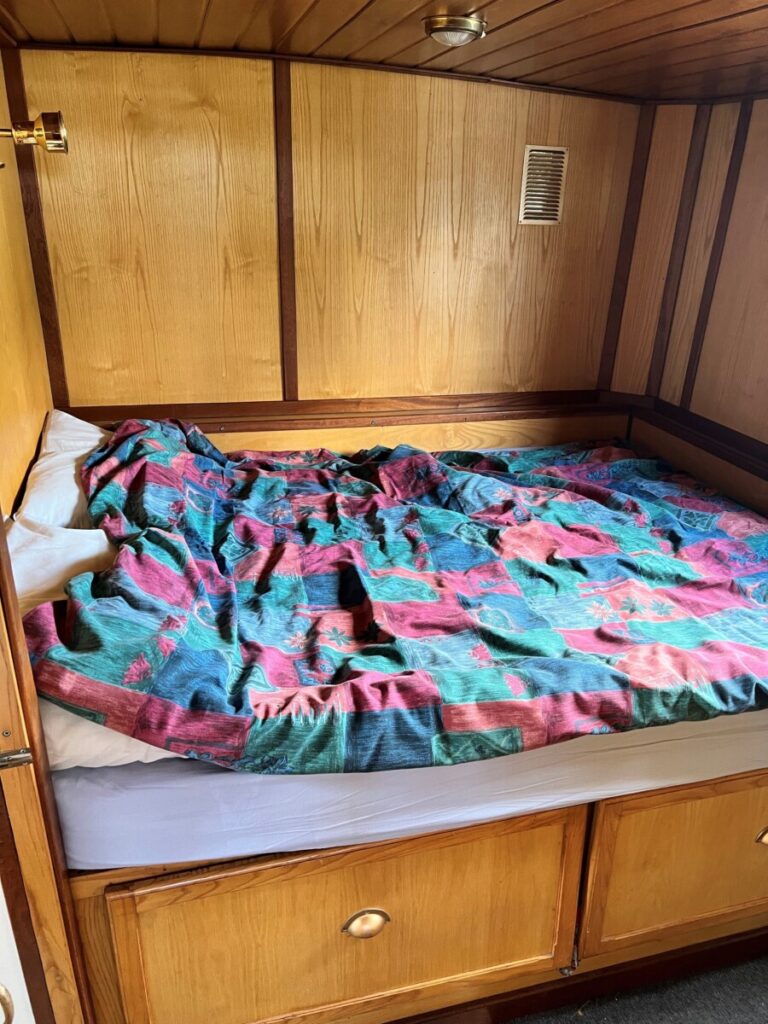
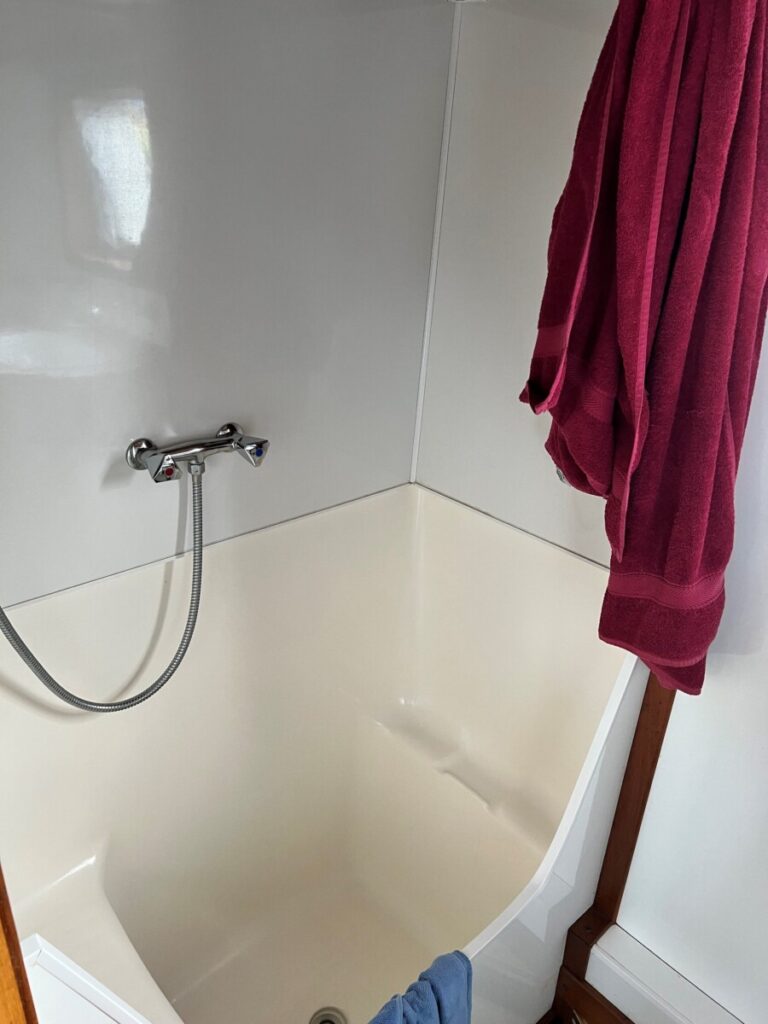
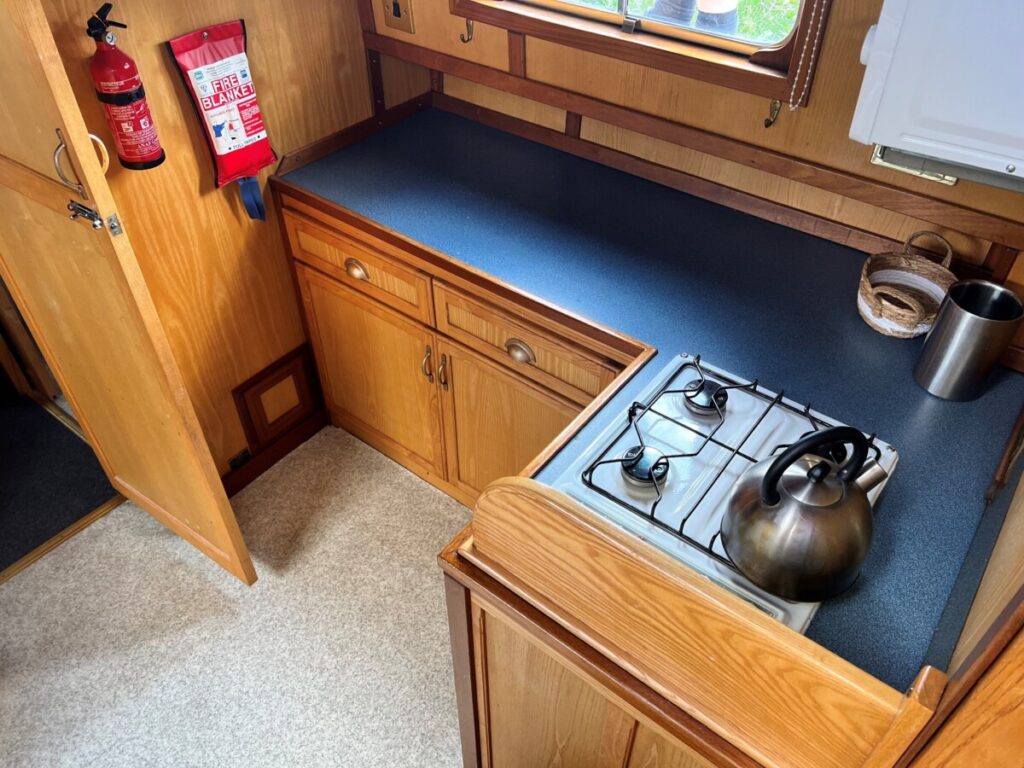
We had the most wonderful trip along the little stretch of Canal du Midi. If you want to explore this by bike or by boat, I highly recommend it.
If you want to explore the canal by bike and need a place to stay, I can warmly recommend La Fabriek Canet. It’s a charming Bed & Breakfast run by Els and Eric. And Els has recently become a certified patissière so you know you’re in for a sweet treat for breakfast.
Other activities in the area is Terra Vinea a bit further south.
Please follow me on my trips. You can find med as catrines.reiser on Instagram or on Facebook.

